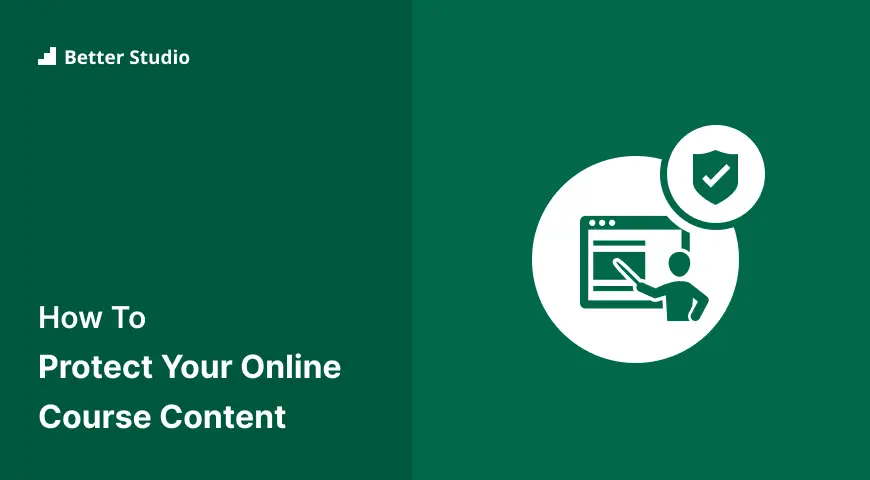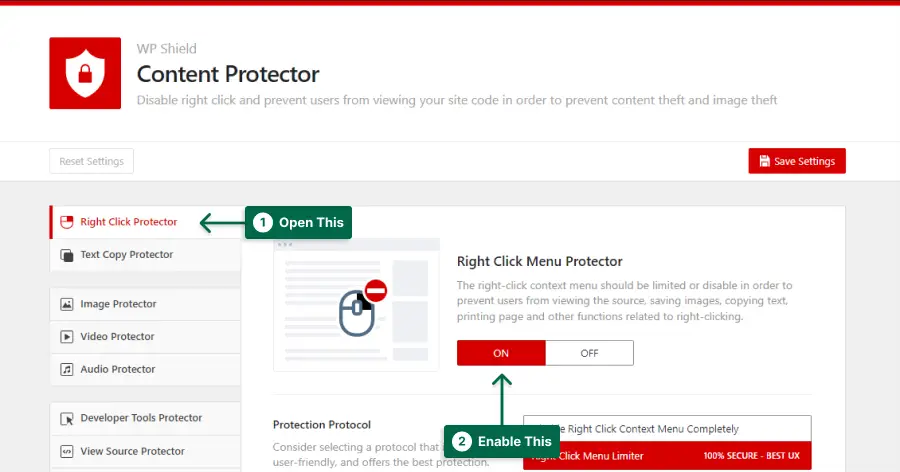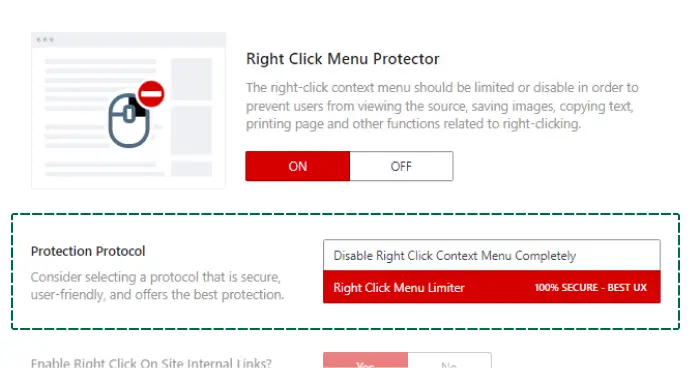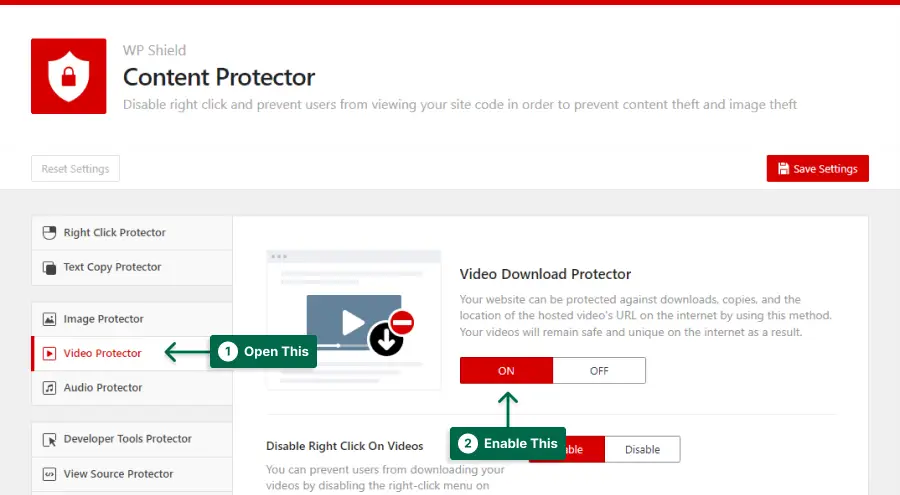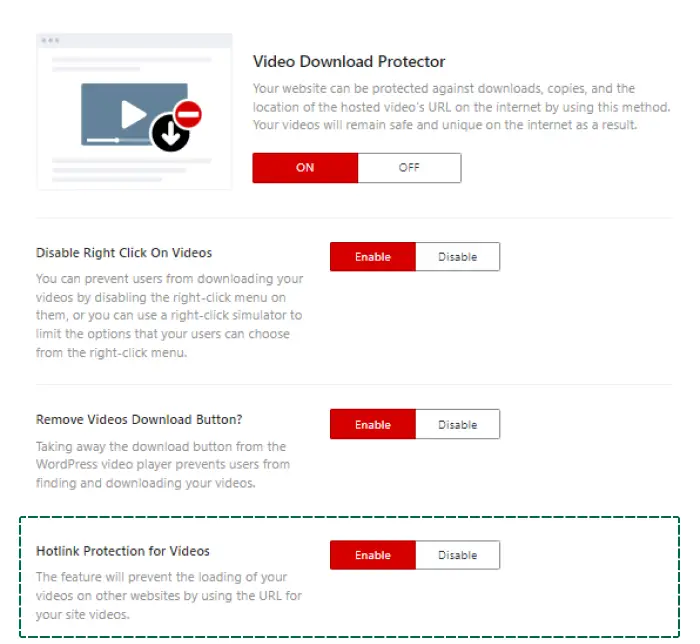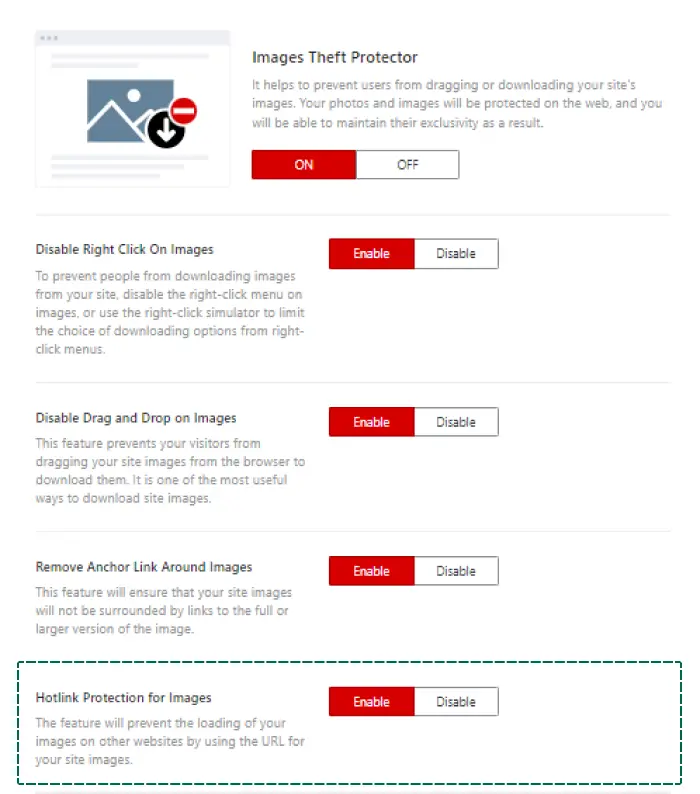Have you ever created an online course and feared that your content might be stolen or used without your permission? If so, you’re not alone.
Protecting your online course content is crucial in today’s digital world, where it’s easy for anyone to download, copy, or share your materials.
In this article, we’ll explore some effective ways to safeguard your online course content, from setting up secure passwords and encryption tools to copyright protections and watermarks.
According to a recent survey by the e-learning platform Thinkific, over 80% of course creators worry about content theft, and with good reason. Online piracy and plagiarism are on the rise, and as more people turn to online learning, protecting your intellectual property is essential.
Whether you’re a seasoned course creator or just starting out, this guide will provide you with valuable tips and strategies to protect your online course content and prevent unauthorized access.
So let’s dive in!
Why Do You Need to Protect Your Course on Your Site?
As an online course creator, protecting your content is crucial for several reasons. In this section, we’ll discuss why safeguarding your online course content is essential.
1. Prevent Content Theft: Protecting your course content ensures that your hard work and effort do not get stolen by someone else. By securing your content, you can prevent unauthorized individuals from copying or distributing it without your permission.
2. Increase Income: When you protect your course content, you have the power to sell or license it as you see fit. This means that you can increase your income by monetizing your content through various channels such as subscriptions, downloads, or access fees.
3. Prevent Unauthorized Sharing: Protecting your course content helps you prevent unauthorized sharing of your material, ensuring that only those who have paid for or been given access to your course can benefit from it.
4. Maintain Control Over Your Content: By protecting your course content, you can maintain control over its use and distribution. You can decide who gets access to your course and how they use it. This gives you the flexibility to personalize your course to suit your audience’s needs and preferences.
5. Build Trust with Your Audience: Protecting your course content shows your audience that you are committed to providing them with high-quality material. This builds trust between you and your audience, which can lead to more sales, better reviews, and increased referral business.
In summary, protecting your online course content is crucial for preventing content theft, increasing income, preventing unauthorized sharing, maintaining control over your content, and building trust with your audience.
By taking the necessary steps to protect your content, you can ensure that your hard work and effort pay off in the long run.
How To Protect Your Online Course Content (5 Methods)
Due to the increasing popularity of online education, it is becoming increasingly important as it continues to grow to protect the content of your online courses from theft and piracy on your online platform.
Protecting your online course content is crucial if you want to maintain student engagement and ensure they get the best possible learning experience from your courses.
Follow these steps to ensure that your course is securely hosted so you can offer your students a quality learning experience.
Method 1: Disable Right-Click And Copy Functions
You can disable the right-click and copy functions on your learning management system to keep your online course content safe from copying.
This is the simplest and most effective solution. Visitors won’t be able to right-click and copy anything on your site if you do this.
A plugin like WPShield Content Protector is designed to help you protect your online course content from being copied or stolen.
You can easily install this plugin on your WordPress site, and it will prevent unauthorized access to your content to a great extent.
Important Note: Keeping in mind that securing your website’s content involves more than just disabling right-click functions. It is also vital that you keep in mind that there is absolutely no shortcut that can be taken to make sure all facets of your website are properly secured and that your content is protected in its entirety.
To disable right-click, do this:
Step 1: Download WPShield Content Protector.
Step 2: Install the plugin from Plugins → Add New.
Step 3: Go to WP Shield → Settings.
Step 4: You can enable Right Click Menu Protector using Right Click Protector.
Step 5: This protector has 2 protocols.
Choose a protocol that suits you:
1. Disable Right Click Context Menu Completely: This protocol entirely disables right click. This is a very safe protocol. However, it decreases the user experience (UX.)
2. Limit Right-Click Menu: When the user right-clicked on something, the menu appears, and there would be a limited choice of items available under that menu. This option is completely safe and will not affect the user’s experience.
By disabling the right-click and copy functions, you are proactively defending your online course content against potential copyright infringers. This simple measure can help keep your content secure and protected.
Method 2: Use Watermarks on Images and Videos
Watermarks can be an effective form of protection for your online course content. Watermarks are digital signatures used to indicate the source and ownership of a file or image.
Protect your images and videos from copyright infringement, and ensure they aren’t reused without your permission with watermarks.
Your content can also be further differentiated from others on the web with a watermark.
The quality of your image or video will decrease as soon as someone tries to remove the watermark from your content.
There are many WordPress watermark plugins available in the market that can help you watermark your images and videos.
When adding a watermark to videos, there are several options depending on the type of video file. For example, for MP4 files, you can use a watermark feature provided by your video hosting platform. Alternatively, using third-party video editing software, you can add a watermark directly to the video file.
Furthermore, make sure your watermark is strategically placed so that it does not obstruct important content or interfere with the overall design of your site.
Method 3: Copyright Your Work
Copyrighting your training course is one of the most effective ways to protect your online course content. It gives you exclusive legal rights over your intellectual property, which can be used against anyone trying to steal or misappropriate it.
Copyright laws protect you as a creator when registering your work with a government agency, such as the USPTO.
There could be civil or criminal charges brought against someone who attempts to copy or use your material without your permission.
It’s also an option to pursue a claim against a company for copyright infringement, in which case you might be eligible for monetary damages as well.
Include a detailed description of what you’re copyrighting, including video lectures, lesson plans, written materials, and more that can be registered.
A service like Copyright Clearance Center may also be able to help you protect your digital works, so you may want to take into consideration using it.
Finally, you should label all original material clearly with your name and copyright information. This makes it easier to identify who owns the work and acts as a deterrent to people who may be tempted to steal it. Doing this will help ensure your online course content remains secure and protected from infringement.
Method 4: Use Video Streaming Service With Content Protection
Your online course content must be protected against piracy and unauthorized access as part of your security efforts.
There is a possibility that you might be considering using video streaming services as part of your efforts to prevent video downloads. This section will provide you with a step-by-step guide on how to use such services according to your current needs:
Step 1: Choose a service that offers content protection features. Some popular options include Brightcove, Kaltura, and Vimeo. Learn more about each platform and find the one that meets your requirements the best.
Step 2: Upload your video to the streaming service.
Step 3: Put the videos in an encrypted format before uploading them. That way, nobody can access or download them without permission.
Step 4: The encoded videos can then be uploaded to the streaming service. Depending on the platform, you might be able to adjust the settings to even further enhance the security of the videos.
Taking the necessary steps can ensure the safety and security of the content of your online course. Using video streaming services with content protection can give you peace of mind on the matter of your course material being safe.
Finally, you can use Content Protection Platforms (CPPs) such as Azure Media Services, Cloudflare Stream, and AWS Elemental MediaConvert to further secure your videos.
The steps outlined above will help you stay safe and secure in the future while maintaining the integrity and quality of all the course content.
Method 5: Disabling Hotlinking on Images and Videos
Many online courses use videos and images as part of their content. Unfortunately, these can be hotlinked to other websites and used without permission, leading to potential copyright infringement. To protect your content, you should consider disabling hotlinking for any images or videos you use in your course.
You can use plugins or third-party services to control hotlinking. WPShield Content Protector can be used to make it more difficult for someone to copy or share your content without your permission.
To disable hotlinking on the videos, do this:
Step 1: Go to WP Shield → Settings.
Step 2: To enable Video Download Protector, go to Video Protector.
Step 3: Enable Hotlink Protection for Videos.
To disable hotlinking on the images, do this:
Step 1: Go to WP Shield → Settings.
Step 2: Enable Image Theft Protector from Image Protector.
Step 3: Enable Hotlink Protection for Images.
You can disable hotlinking for all images and videos on your website once you have completed these simple steps.
FAQ
The best way to protect your online course content is by using secure hosting platforms with reliable security features, such as SSL encryption and two-factor authentication. You should also consider setting up access control measures so only authorized users can view or modify your course content.
Some tips for protecting your online course content include: using secure hosting platforms that provide reliable security features, adding watermark to your courses, encrypting your videos with video protector services, and disabling hotlinking and backing up your course content regularly in case of accidental loss or damage.
If you suspect someone is trying to access your online course content, contact your hosting provider and make sure you’re protected. Changing your password, setting up security measures, and watching your content for suspicious activity are also good ideas.
Conclusion
It’s essential to protect your online course content so that it doesn’t become a victim of malicious activity and stays secure and safe for your students.
We discussed how to protect your online course content in this post, including encrypting your videos to prevent video downloads and setting passwords.
During the discussion, we also covered the importance of using a protection plugin like WPShield Content Protector to ensure the security of your content as well as the safety of your visitors.
Thank you for reading this article till the end. Please let us know in the comments if you have any experience with video protection.
For more information about protecting your online course content, check out BetterStudio’s blog. Here you will find more tutorials related to online course security. You can also follow BetterStudio on Twitter and Facebook for all the latest updates.



